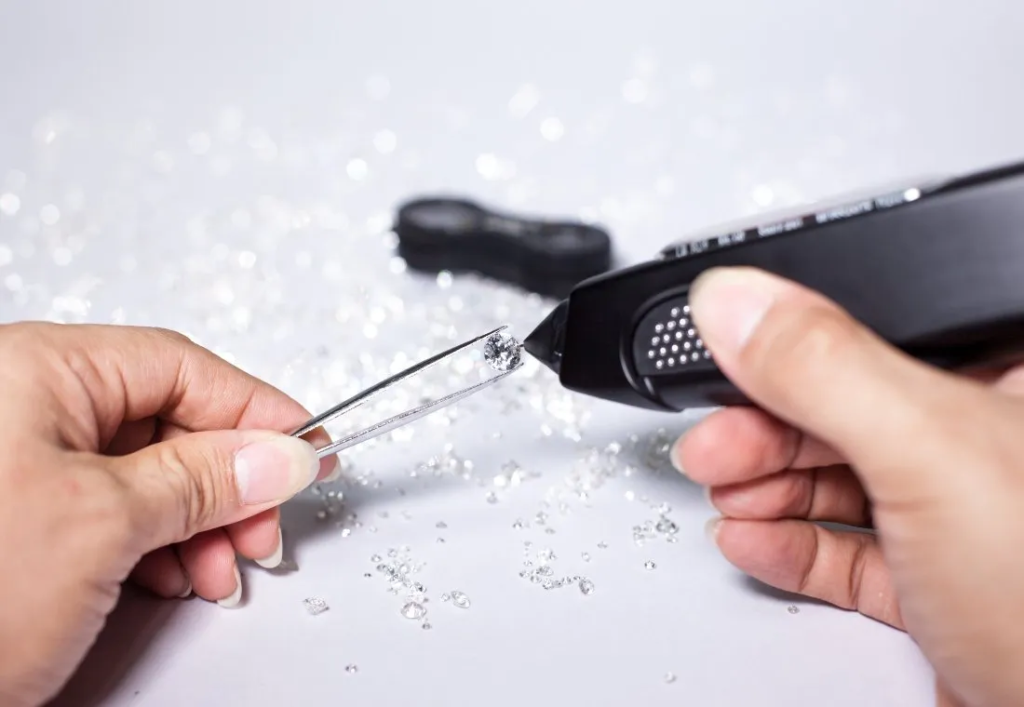Diamonds have long been cherished for their exceptional beauty and enduring value. However, distinguishing a genuine diamond from a look-alike diamond tester pen for sale or synthetic counterpart can be challenging without the right tools. This is where diamond testers come into play. These sophisticated devices are designed to accurately determine whether a gemstone is a genuine diamond, leveraging advanced technology to provide reliable results. In this article, we explore the intricacies of diamond testers, their various types, and their significance in ensuring authenticity.

At the heart of diamond testing technology is the principle of thermal conductivity. Natural diamonds are renowned for their superior ability to conduct heat compared to most other materials. Diamond testers harness this property by measuring how efficiently heat passes through the gemstone. The tester typically employs a probe that, when in contact with the stone, assesses the heat transfer rate. If the results align with the known thermal conductivity of diamonds, the tester confirms the authenticity of the gem. This method is highly effective for distinguishing between diamonds and common simulants like cubic zirconia or synthetic stones, which do not share the same thermal properties.
There are primarily two categories of diamond testers: thermal conductivity testers and electrical conductivity testers. Thermal conductivity testers are the more prevalent type and are designed to measure how well heat travels through the gemstone. They are generally straightforward to use, making them suitable for both professionals and hobbyists. Electrical conductivity testers, while less common, are employed to differentiate diamonds from other materials that might share similar thermal properties but differ in their electrical conductivity. These testers are particularly useful in identifying high-tech synthetic diamonds and advanced simulants, providing a deeper layer of precision in gem verification.
The effectiveness of a diamond tester hinges on its accuracy and calibration. High-quality testers are finely tuned to detect even minor variations in thermal or electrical conductivity, which is crucial for distinguishing between genuine diamonds and high-grade imitations. Despite their reliability, these testers are not without limitations. For instance, certain synthetic stones like moissanite exhibit high thermal conductivity, which can sometimes lead to false positives when using a thermal conductivity tester. To address this, gemologists often employ additional methods, such as advanced spectroscopy or magnification techniques, to confirm the authenticity of a diamond comprehensively.
The rise in consumer awareness and interest in gemstones has led to an increase in the availability and accessibility of diamond testers. Affordable and portable models now allow consumers to verify their gemstone purchases independently, offering peace of mind and protecting against potential fraud. These consumer-grade testers are designed to be user-friendly, making it easier for individuals to conduct their own assessments with confidence. This shift empowers buyers to make informed decisions and ensures greater transparency in the gemstone market.
In summary, diamond testers are invaluable tools in the gemological world, providing an effective means of verifying the authenticity of diamonds. By utilizing principles of thermal or electrical conductivity, these devices offer a practical solution for distinguishing real diamonds from imitations. As technology advances, diamond testers will continue to evolve, enhancing their precision and ease of use. For both professionals and consumers, understanding and utilizing these testers is crucial for ensuring the integrity of gemstone transactions and safeguarding the true value of diamonds.